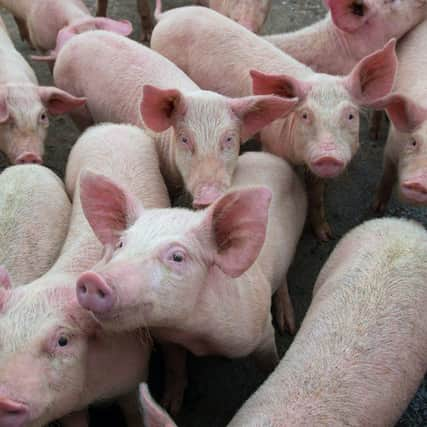Farming: Inflation keeps farm incomes under pressure


The latest Agrimarket Outlook for the country’s livestock industries produced by the Agriculture and Horticulture Development Board (AHDB) points to food price inflation rising higher and persisting for longer in the UK than in Europe.
And while the beef and lamb sectors might be set for some expansion following a period of favourable prices, the report warns that these sectors will face headwinds, with demand looking set to suffer on the back of food inflation and the shift in changing consumer preferences as the country moves towards lower economic growth.
Advertisement
Hide AdAdvertisement
Hide AdOverall beef consumption was forecast to drop by 4 per cent in 2022, as the recovery in food service demand slowes and retail sales start to suffer as consumers switch to cheaper proteins.
On the lamb front, the 2022 lamb crop was forecast higher following growth in the breeding stock, with total sheep meat production expected to rebound from last year’s low levels, returning to 2020 levels.
The report also forecast a return to more normal trading patterns after two years of disruption led to a focus on a pre-Brexit kill pattern but overall, demand for sheepmeat was expected to remain extremely sluggish on the back of changing preferences and rising prices.
The crisis in the pig sector was expected to see production fall by an estimated 6 per cent in the second half of 2022, with likely knock-on consequences for export growth volume, while UK demand is also expected to weaken.
And according to the report, the impact of price volatility and uncertainties around milk prices and labour shortages were also expected to contribute to GB milk production finishing the 2022/23 season between 1-3.8 pe cent lower year on year.“All livestock sectors will face challenges in the coming months as cashflows are put under pressure in preparation for overwintering,” said Patty Clayton, AHDB lead analyst.
And while a contraction in the pig herd would come as no surprise, the dairy sector was likely to face similar financial challenges when winter feed costs bit and prices waned.Sarah Baker, AHDB economic strategist, said that the impact of the Russian invasion of Ukraine continued to challenge global growth and was driving inflation across the board.
“Combined with the impact of leaving the EU and the Covid pandemic, inflation is undoubtedly the biggest issue in the UK, with serious ramifications for our agricultural economy.She added that it was “inevitable” that price inflation for essential goods such as food and fuel would force a reduction in consumption for many people, particularly those on low or fixed incomes.
“Retailers are working hard to keep the costs of food down for consumers, but this has consequences for agricultural producers who are already being affected by the fuel and input cost rises, squeezing business margins.”
Comments
Want to join the conversation? Please or to comment on this article.